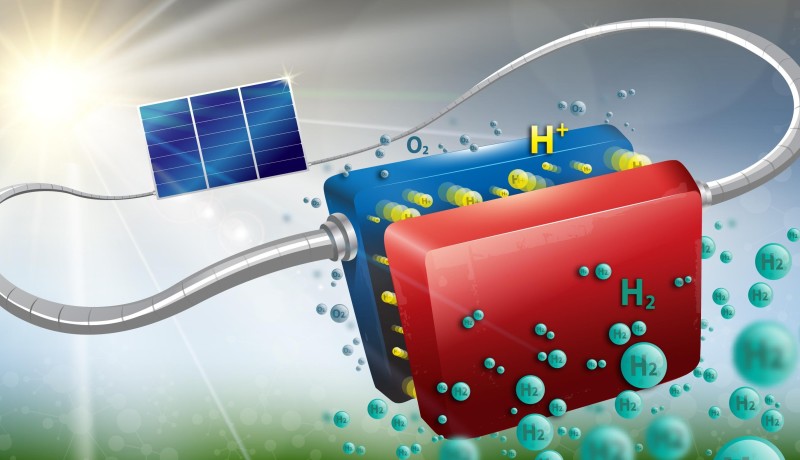Efficient and affordable solar energy storage
December 08, 2016
on
on

Researchers at the École Polytechnique Fédérale de Lausanne and the Centre Suisse d’Electronique et de Microtechnique have made a prototype solar panel which converts solar energy directly into hydrogen. They have succeeded in designing a robust and effective system using three crystalline solar cells that are connected to an electrolysis system that has an efficiency of 14.2%. An important feature is that no rare metals are required and that the team used only proven parts to assemble the system.
The system should, when installed in Switzerland and with a 12-14 m2 array, generate sufficient hydrogen in a year to enable a fuel-cell powered car to be driven for 10,000 km.
By using multiple layers of crystalline silicon and amorphous silicon, higher voltages are possible so that three cells in series generate a nearly ideal voltage for electrolysis. Nickel is used as the catalyst, a metal that is readily available. With an expected life of more than 25 years the system can be considered quite durable.
More information:
http://actu.epfl.ch/news/an-effective-and-low-cost-solution-for-storing-sol
The system should, when installed in Switzerland and with a 12-14 m2 array, generate sufficient hydrogen in a year to enable a fuel-cell powered car to be driven for 10,000 km.
By using multiple layers of crystalline silicon and amorphous silicon, higher voltages are possible so that three cells in series generate a nearly ideal voltage for electrolysis. Nickel is used as the catalyst, a metal that is readily available. With an expected life of more than 25 years the system can be considered quite durable.
More information:
http://actu.epfl.ch/news/an-effective-and-low-cost-solution-for-storing-sol
Read full article
Hide full article


Discussion (3 comments)